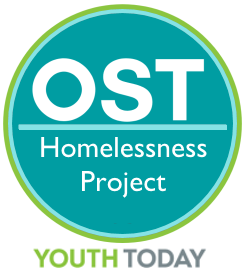 PRESSMASTER/SHUTTERSTOCK
PRESSMASTER/SHUTTERSTOCK
SERIES: PART 7 OF 7
 Part 1: How Do We Make Youth Homelessness Effort Bipartisan?
Part 1: How Do We Make Youth Homelessness Effort Bipartisan?
Part 2: America’s Biases Marginalize Youth, Drive Them to Homelessness
Part 3: Collective Decision-making Can Neutralize Politics of Fear
Part 4: So, How Does This Collective Decision-making Work?
Part 5: Youth Homelessness Is a Symptom, Not a Cause
Part 6: To Work On Youth Homelessness, Brainstorming, Decision Analysis Strong Tools
Part 7: Youth Themselves Must Help Design Supports To Protect Them From Homelessness
This is not a bi-partisan issue
There are policies and practices that have been proven to work for communities that embrace them. Adopting such measures need not be a politicized action. In fact, all major federal juvenile justice reforms have involved bipartisan support and legislators working together across the aisle. ( See, for example, The Juvenile Justice Reform Act of 2018.)
This is an issue that need not be a political one at all. Supporting young people, helping build up community; these things are the heart of what societies are called to do.
Often however, we don’t do a good job at it. Nationally, nearly 44% of youth experiencing homelessness report that they have spent time in a jail, detention facility or prison. Nearly 78% report that they have had some contact with law enforcement.
The Coalition for Juvenile Justice (CJJ) embarked on a project in 2016 to change that. CJJ, in partnership with the National League of Cities’ Institute for Youth, Education and Families, the National Network for Youth and other leading experts from a wide range of fields, set out to help communities end the criminalization of youth experiencing homelessness and ensure that young people who do come into contact with the justice system exit to safe, stable and secure housing.
To that end, CJJ created the Principles for Change, policy recommendations that are now being implemented in communities across the country. These recommendations are highly applicable here as well.
First and foremost, the principles and the experts who contributed to their drafting recognized how essential reentry planning is. For both youth in the justice system and youth in the child welfare system, transition planning is critical. When juvenile justice system involvement cannot be avoided, comprehensive transition planning should begin immediately after — and continue throughout — a young person’s confinement or probation supervision.
Such transition planning is the only way to ensure that a young person is able to receive the services they need to help them re-enter their community safely. To be successful this planning process should begin as soon as possible and focus on ensuring that a young person both obtains appropriate services and has a safe, secure and sustainable place to live when they are released.
The question is not just where Johnny will stay the night he leaves a facility, though. Plans should look at both night one and night 100 and detail backup plans and the backup to the backup plan. This ensures that we don’t force young people into a situation where they have to identify housing alternatives in the midst of an emergency, such as a fight with mom’s boyfriend or a breakup with their own significant other.
Housing alone not enough
To that end, communities should ensure they have both long- and short-term safe housing options available for youth who are, or have been, involved with the juvenile justice system or child welfare system. If a permanent placement option, such as a living arrangement with family or friends, is not identifiable, alternative housing options need to be available that are appropriate and accessible for youth. A young person should never have to remain in a detention placement because of a lack of housing options.

Judge Steven C. Teske
Housing alone will not address all of a young person’s needs though. In interviews with youth experiencing homelessness, young people say they have a broad range of needs, including employment, education and basic necessities like access to laundry and other essentials. Services and supports can help young people and their family get and keep safe and stable housing.
The principles recommend education, workforce development programs and developmentally appropriate programs aimed at addressing past trauma, all of which are essential to help address the needs of a young person who is experiencing homelessness. Communities should work to make these programs available and to connect young people and their families with appropriate services in a way that supports both the young person and, as appropriate, their family.
What these supports and related housing options will look like, though, cannot be decided in a vacuum. It is essential that youth help lead and shape the identification and implementation of policy and practice solutions and that these solutions be tailored to address the needs of young people most likely to be impacted by youth homelessness, juvenile justice and, in this case, child welfare.
Collaborations with young people who are currently experiencing these challenges, or who have previously experienced them, are essential. These partnerships help ensure that programs are crafted in ways that address young people’s needs in ways that work for youth. In an ever-changing world, an impactful idea from one generation may simply not be the right fit for another.
These partnerships should go beyond lip service to meaningfully engage youth. This could include youth panels or boards, peer-to-peer outreach and employment — at all levels of an organization — of youth who have experienced homelessness and other systems that you are trying to address.
Focus on the most vulnerable
Youth of color and youth who are lesbian, gay, bisexual, transgender, queer, questioning and/or gender nonconforming (LGBTQ/GNC) are at greater risk of involvement with the juvenile justice system and of homelessness. Because of this, special attention must be paid to addressing their needs and pathways into and out of, the justice system and homelessness.

Naomi Smoot Evans
Special attention should also be paid to the needs of other disproportionately represented populations, including recent immigrants and youth with disabilities. Such efforts are essential to addressing the disproportionalities that are pervasive throughout our justice systems, child welfare systems and among youth who are experiencing homelessness.
The principles also recommend being mindful of trauma that young people may have experienced. Young people who experience homelessness and those who come into contact with the juvenile justice system are disproportionately more likely to have experienced previous trauma.
Service providers and other stakeholders should recognize that each individual is unique and that trauma may manifest itself in many different ways. Agencies should understand that young people who they work with may have survived abuse, human trafficking and homelessness, but should steer clear of requiring any of these labels in order to access services, as young people may be hesitant to self-identify due to stigma and a number of other factors.
Accomplishing all this may seem daunting, but by sticking to proven solutions communities can avoid the pitfalls that can come when politics take over the conversation and decision-making process.
Steven Teske is the chief judge of the Juvenile Court of Clayton County, Ga., was the national chair of the Coalition For Juvenile Justice and won the 2018 leadership prize from the Juvenile Law Center. He served two terms on the Federal Advisory Committee for Juvenile Justice, is a former member of the Board of Directors of the National Council of Juvenile and Family Court Judges and has testified before Congress numerous times on juvenile justice reform.
Naomi Smoot Evans is the executive director of the Coalition For Juvenile Justice, where she oversees the organization’s efforts to help states create brighter outcomes for youth. She co-chairs the Act 4 Juvenile Justice Coalition and was instrumental in passage of the 2018 Juvenile Justice Reform Act.

























